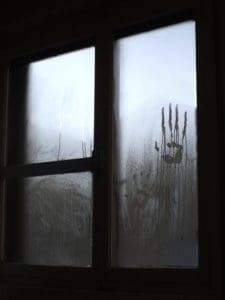New Orleans Jazz Clubs: A Historical Tour of the Genre’s Genesis
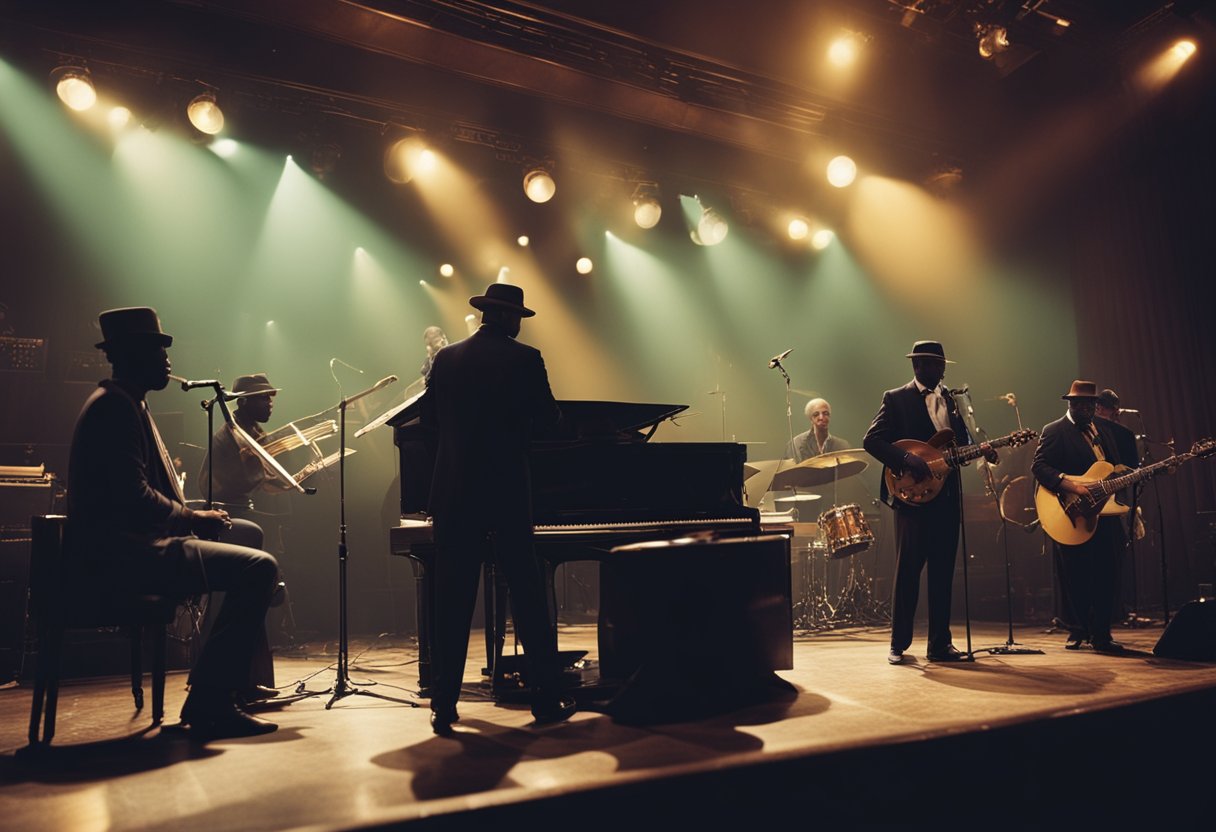
Updated On: March 20, 2024 by Maha Yassin
Jazz, a quintessential element of New Orleans’ heartbeat, is as much a part of the city as the mighty Mississippi that bends around it. This vibrant music genre found its first whispers in the crevices of the Crescent City, where cultural diversity and a spirit of improvisation gave rise to something truly revolutionary. As we explore the dimly lit, smoke-filled New Orleans jazz clubs, we tread the ground where a powerful musical revolution began.
In these historical hotspots, a confluence of African rhythms, European harmonies, and Creole influence melded to create the early jazz sounds that would echo worldwide. The music thrived in the sultry nights of Storyville, the infamous red-light district, and spread to revered venues that cultivated legends and shaped the art form. These clubs weren’t just buildings but fertile breeding grounds for innovation, where instruments spoke the language of freedom and resilience.
Historical Roots of New Orleans Jazz
In addressing the historical roots of New Orleans Jazz, we are unearthing the pivotal role of the city’s melting pot of cultures. Jazz is the musical manifestation of New Orleans’ diverse ethnic heritage, which resonates with the rhythms of its African and European ancestry.
Congo Square and African Influences
In Congo Square, the African-American community congregated on Sundays to perform music and dance, keeping alive the rich traditions of their ancestral homelands. These gatherings’ exceptional blend of rhythms and melodies laid the groundwork for New Orleans Jazz. These spirituals and folk traditions fused with the varied cultural milieu the city was known for.
Development from Ragtime to Jazz
Jazz in New Orleans evolved from precursors like ragtime and the blues, driven by a thriving musical environment in the late 19th and early 20th centuries. The transitions from these genres into what we now recognise as jazz was a gradual process, improvised mainly by the African-American community, blending Creole influences with the distinct syncopations of ragtime and the expressive depth of the blues.
The Role of the French Quarter
The French Quarter has long been the cultural epicentre of New Orleans, where Creole and European cultures melded. Its streets echoed with the sounds of early jazz musicians, whose performances in the Quarter’s venues were integral to jazz’s burgeoning prominence. Here, cultural exchanges crossed racial and ethnic lines, sparking a musical revolution to captivate the world.
Through the backstreets and music halls of New Orleans, the soul of a nation found its voice. The stories embedded in the city’s history resonate with every pluck of a string and horn blast in the jazz New Orleans bestowed upon the world.
Pioneers of Jazz and Early Influences
In New Orleans jazz, specific figures stand tall as towering beacons of innovation. They shaped the very essence of the genre we know and love today.
Buddy Bolden and the Birth of Jazz
Buddy Bolden, often revered as the father of jazz, was a pioneering cornetist whose charismatic playing is said to have laid the groundwork for what would become jazz. Despite no recordings of his music surviving, Bolden’s powerful, improvisatory style and his band’s performances at venues like the Odd Fellows Hall captivated the New Orleans music scene from the late 1890s. Bolden’s synthesis of ragtime with the blues, spiced with a unique sense of swing, set the stage for all that jazz was to become.
Jelly Roll Morton’s Contributions
Jelly Roll Morton’s self-proclaimed role as the originator of jazz isn’t without merit; as a composer and pianist, he significantly impacted the genre’s development. His complex compositions and arrangements incorporated various influences, creating a sophisticated sound that still echoes through New Orleans jazz today. His “Red Hot Peppers” recordings exhibit a blend of individual improvisation and tight ensemble playing ahead of its time.
Louis Armstrong’s Rise to Fame
From the streets of New Orleans to global acclaim, Louis Armstrong’s journey is an inspirational tale of a trumpet virtuoso who reshaped jazz. Armstrong’s innovative style of playing, characterised by inventive solo breaks and a vibrant, gravelly voice, made him a standout musician of the early jazz era. His work with the King Oliver Creole Jazz Band and the Fletcher Henderson Orchestra in New York, followed by his own Hot Five and Hot Seven groups, cemented his legacy as a jazz legend and influenced generations of musicians to come.
Diversity in Jazz: The Melting Pot of Cultures
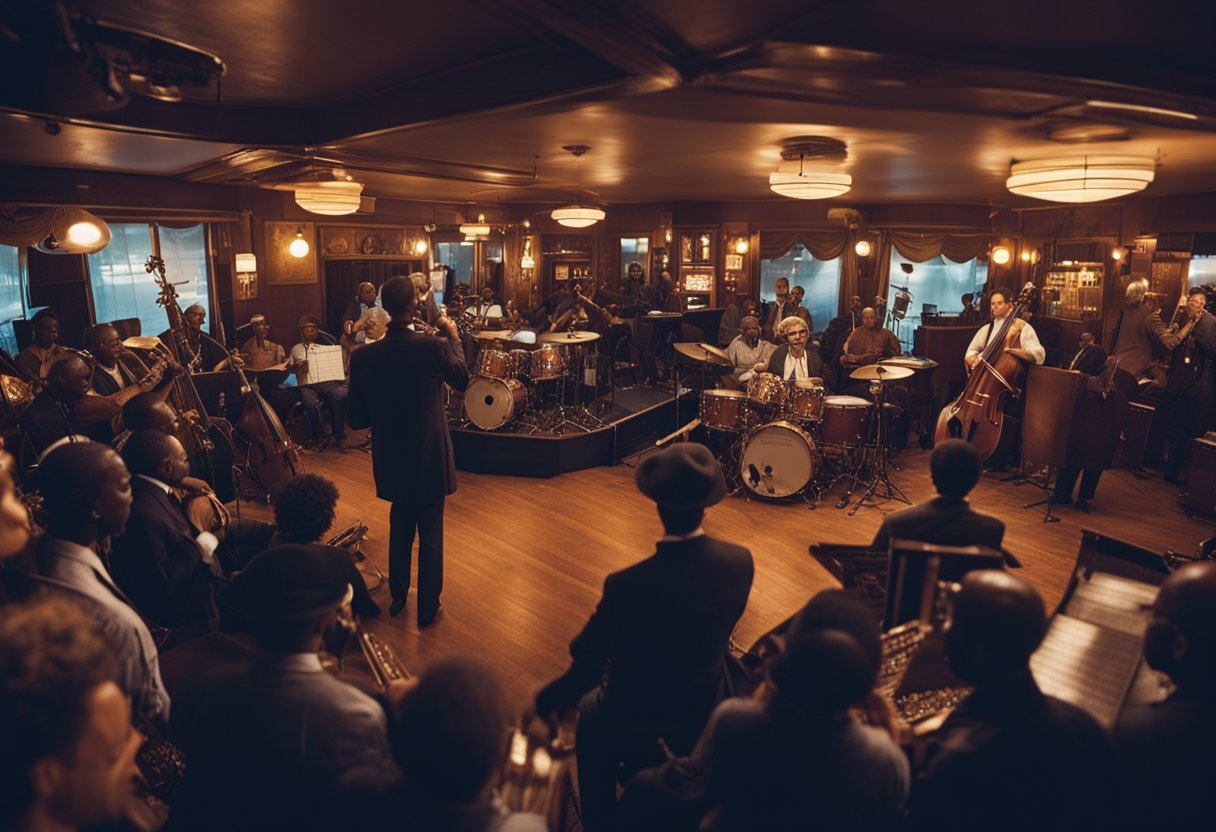
The origins of jazz are deeply rooted in the convergence of various ethnic influences in New Orleans. This rich tapestry of cultures provided the essential ingredients for a musical revolution that would resonate worldwide.
Italian, Spanish, and Irish Influences
New Orleans’s jazz was sculpted through contributions from Italians, Spaniards, and the Irish, introducing rhythms and instrumentation that diversified the genre. Italian musicians, often skilled in stringed instruments, interwove operatic flair into jazz’s evolving structure. The Spanish imparted a flamenco-tinged resonance, enriching jazz melodies with Iberian zest. Meanwhile, the Irish left an indelible mark with their folk traditions, infusing jazz with a lyrical narrative quality that would echo through the ages.
Creole and African-American Intermingling
The seamless intermingling between Creole and African-American communities laid the foundation for a distinctive jazz sound. The Creole’s European classical music training blended with African rhythmic patterns and blues, creating a dynamic, syncopated sound. This synergistic partnership, reflective of New Orleans’s Creole heritage, led to the birth of jazz’s most definitive characteristics.
The German and French Impact on Jazz
German influence in New Orleans jazz took form through structured brass band performances and the adoption of instruments like the trumpet. Crucial to jazz’s development were the harmonic textures brought forth by French-trained Creole musicians, who infused the music with a sense of harmonic complexity. This Franco-Germanic essence was instrumental in jazz’s transition from a folk art to a sophisticated tapestry of sound.
Key Jazz Venues and Their Histories
New Orleans is renowned for its vibrant jazz scene, especially the French Quarter and beyond, where iconic clubs and historical dance halls have been the cradle for jazz music for over a century.
Iconic Clubs of the French Quarter
Preservation Hall is a towering figure in the French Quarter’s jazz tapestry, founded in 1961 to honour traditional New Orleans Jazz. Stepping into this intimate venue is akin to traversing through time, with live performances that continue to resonate with the original spirit of jazz.
Moving through the French Quarter, one encounters numerous clubs that have been instrumental in the propagation and evolution of jazz. The venues are as diverse as the music, each with histories that speak to the growth of jazz from local performance sites to stages that have welcomed a global audience.
Dance Halls and Saloons Beyond Bourbon Street
Venturing beyond the well-trodden paths of Bourbon Street, jazz enthusiasts find themselves amidst former dance halls and saloons reimagined as modern jazz havens. Once the playground of early jazz musicians, these establishments evolved while maintaining their historic character – offering a stage for burgeoning talents and seasoned artists.
Historically, these locales were more than simply places to enjoy music; they were integral to the dance culture that fuelled jazz’s early growth. Today, they echo that past by providing spaces where the dance continues, and the vibrant rhythms of jazz invite all to partake in a living history.
In exploring New Orleans’ jazz heritage, we honour these venues not merely as clubs or destinations but as the beating heart of a musical revolution that has shaped our collective culture.
Musical Instruments and Innovations
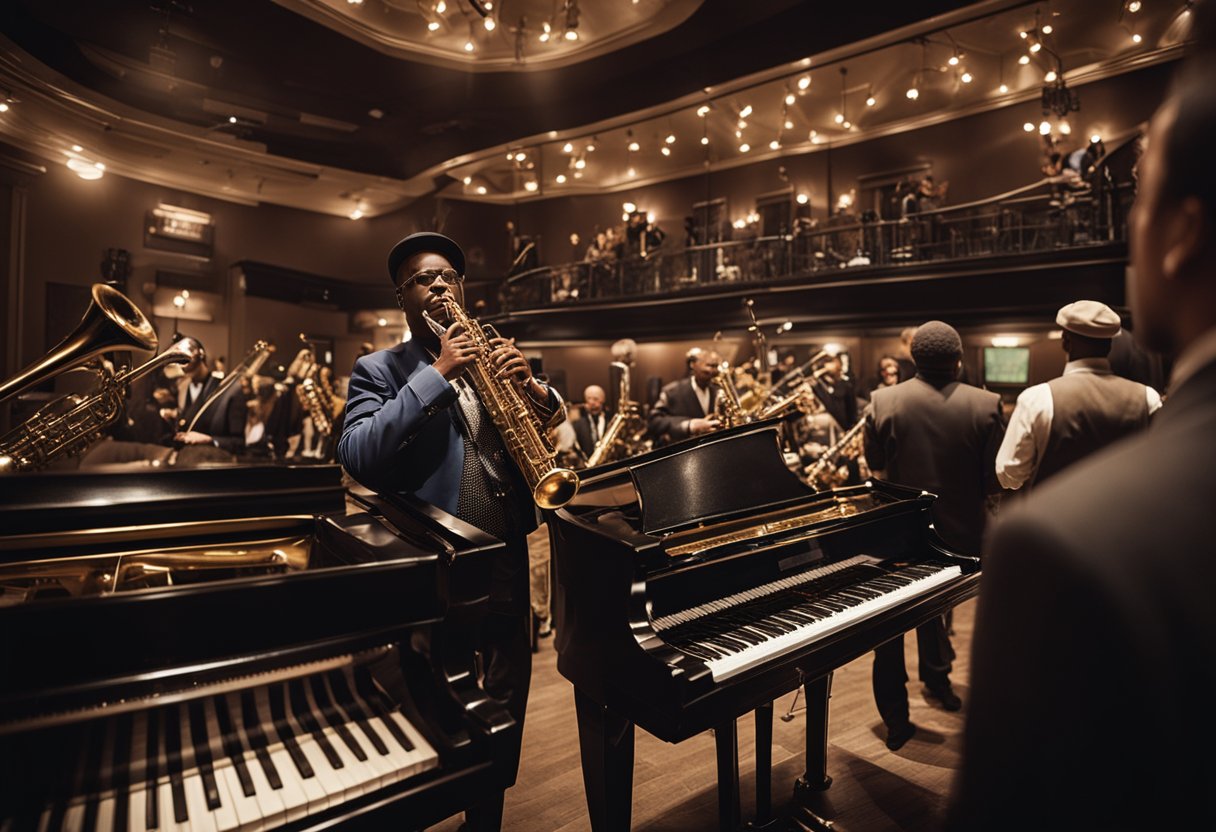
In New Orleans, where jazz music has deep roots, the evolution of musical instruments and their use in jazz reflects the genre’s inventive spirit. Here, the cornet and trumpet, clarinet, and trombone have played pivotal roles, complemented by the essential rhythm section of drums and bass, each contributing to the rich tapestry of jazz.
The Cornet and Trumpet in Jazz
The cornet has been instrumental in the rise of jazz, with its bright, piercing tone slicing through the ensemble. It was the cornet that allowed legends like Buddy Bolden to improvise, revolutionising jazz with spontaneous creativity. As jazz matured, the trumpet took centre stage with its powerful and versatile voice, leading the charge in countless brass bands and jazz ensembles.
Clarinets and Trombones: The Wind Section
The clarinet and trombone round out the wind section in traditional jazz bands. The clarinet’s fluid agility adds a smooth counterpoint to the bold voices of the other instruments, while the trombone brings a rich, full-bodied resonance. Together, these instruments contribute to the complex polyphony that is a hallmark of New Orleans jazz, weaving in and out of each other with syncopated rhythms and melodic lines.
Rhythm Section: Drums and Bass
The backbone of any jazz group, the rhythm section consists of drums and bass, providing both the foundation and the driving force behind the music’s swinging feel. The drums offer a spectrum of sounds from the snare’s sharp snap to the bass drum’s resonant boom, while the bass – whether the double bass or its electric counterpart – adds depth and a steady pulse that anchors the harmonic structure and propels the groove forward.
Cultural Traditions in New Orleans Jazz
New Orleans jazz is deeply rooted in a vibrant tapestry of cultural traditions unique to the region. From the illustrious Mardi Gras celebrations to the soulful sounds of brass bands in second-line parades, these practices have shaped the jazz scene, echoing the city’s rich history and diverse influences.
Mardi Gras and Jazz Festivals
Mardi Gras is a kaleidoscope of culture, with jazz music being a cornerstone of the festivities. Numerous festivals during this period feature jazz performances that encapsulate the spirit of Louisiana. The fusion of music at these events, from traditional Creole bands to contemporary jazz ensembles, showcases the genre’s evolution while honouring its origins.
Second Line Parades and Brass Marching Bands
The second-line parades, synonymous with New Orleans jazz, are a sight as brass marching bands fill the streets with jubilant sounds. Spectators join in, dancing and following the music, participating in a communal celebration transcending mere performance into a vibrant, living tradition.
Social Aid and Pleasure Clubs
Integral to the New Orleans jazz culture are the Social Aid and Pleasure Clubs. Established as mutual aid societies, these clubs have become a bastion for preserving jazz by organising live music events, creating opportunities for musicians, and fostering the sense of community quintessential to the jazz experience.
Evolution of Jazz: From Dixieland to Bebop
The transformative journey of jazz from the vibrant streets of New Orleans to the energetic clubs of New York encapsulates the remarkable evolution of this genre. As jazz travelled, it morphed from the lively Dixieland syncopations to the complex, improvisational style of bebop.
The Emergence of Dixieland Style
The early 20th century saw the birth of Dixieland jazz in New Orleans, a genre rightfully considered the cornerstone of jazz history. It was an ensemble-driven style characterised by collective improvisation and a jubilant rhythm. Musical groups like the Original Dixieland Jazz Band became the first to record jazz commercially, propelling the New Orleans sound beyond local boundaries to cities like Chicago and Los Angeles, further cementing the genre’s nationwide popularity.
Transitions to Swing and Bebop Generations
As the Jazz Age advanced, the genre underwent significant metamorphosis. In the smokey venues of Chicago and the bustling streets of New York, Dixieland gradually gave way to the Swing era, characterised by big bands and smoother, more orchestrated arrangements. This evolved into bebop in the 1940s, with its fast tempos and intricate harmonies. Bebop was smaller in ensemble size but larger in musical complexity, offering a dramatic contrast to earlier forms. It marked a shift in jazz from danceable tunes to a more artistic and individual musician’s platform, attracting new audiences and shaping modern jazz.
Notable Jazz Musicians and Bandleaders
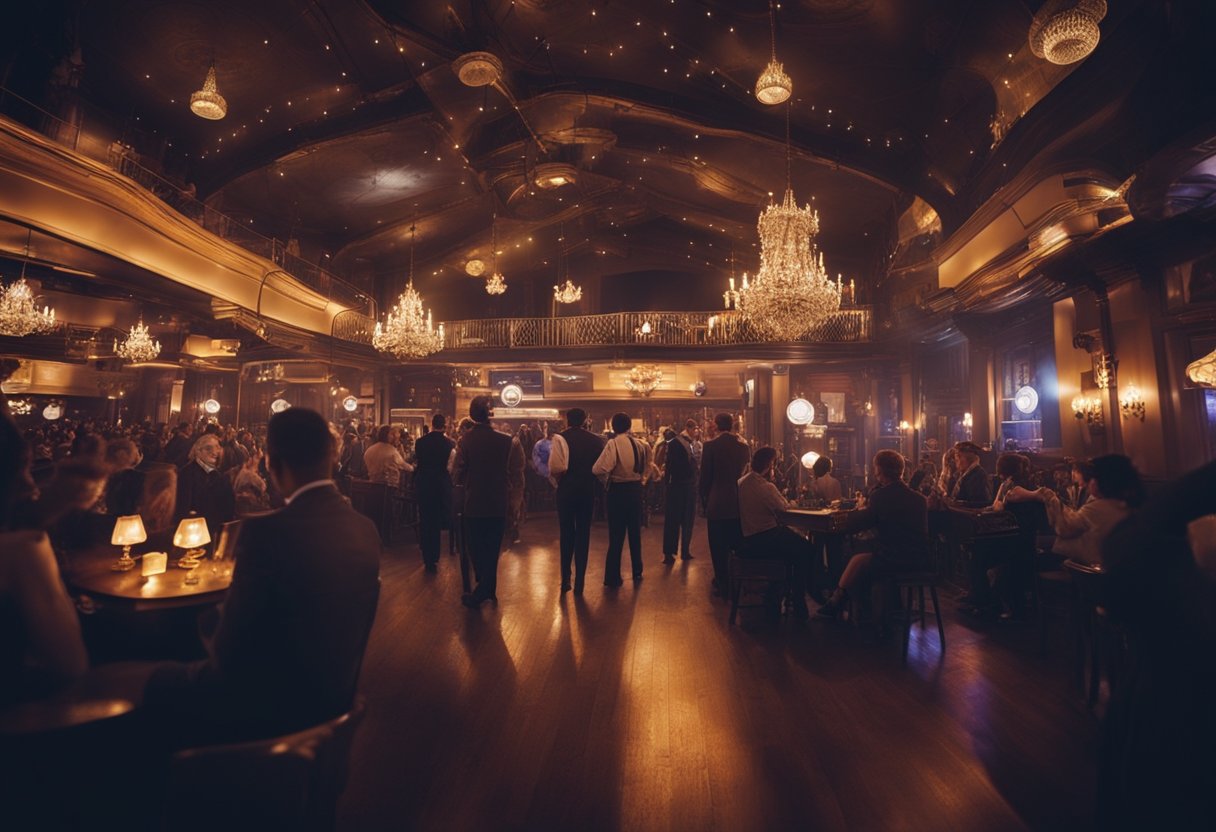
New Orleans has been the incubator for some of the most influential jazz musicians and bandleaders who have shaped the music course. Their legacies are inscribed deep in the heart of the city’s sound.
Sidney Bechet and the Soprano Sax
Sidney Bechet was a pioneer in jazz whose mastery of the soprano saxophone was unrivalled. Renowned for his improvisational skill, Bechet carved out new pathways for jazz with his powerful and lyrical playing style. As both a bandleader and a composer, his contributions were seminal in advancing the genre beyond New Orleans.
Kermit Ruffins and Contemporary Jazz
Kermit Ruffins is a testimony to the enduring spirit of New Orleans jazz. A trumpeter, composer and the torchbearer for contemporary jazz, Ruffins draws crowds with his vibrant performances that pay homage to the past while infusing a modern vigour. Ruffins remain a vital part of the jazz scene, keeping the tradition alive and swinging.
Ellis and Wynton Marsalis: A Legacy
Ellis Marsalis, a distinguished pianist, established a significant footprint as an educator and mentor to numerous jazz musicians. His work laid the foundational bricks for modern jazz education. In his father’s footprints, Wynton Marsalis emerged as an iconic trumpeter known for his staggering technical prowess and compositional creativity. The Marsalis family is a towering presence, intertwining pedagogy with performance in jazz.
Instruments of Change: Jazz as Social Commentary

Jazz revolutionised music and played a poignant role as a social commentary tool. It became the voice for African-American communities and a defiant response to the racial challenges of the times.
Jazz in the Civil Rights Movement
Jazz grew as a form of protest during the Civil Rights Movement. African-American musicians found a powerful ally in jazz to express their desire for equality and justice. Anthems such as Billie Holiday’s bold performance of “Strange Fruit” painted an aural picture of the era’s racial terror, and later, the music of artists like Charles Mingus and Max Roach continued to reflect the struggles and fortitude of the movement.
With its rich musical heritage, the Uptown, New Orleans community became a locus for jazz to echo the sentiments of a people fighting segregation and prejudice. The jazz clubs of Uptown were not just entertainment venues; they were spaces where the African-American community found strength in unity and shared heritage.
The Music as a Voice for Ethnic Communities
Jazz served as a common language for diverse ethnic communities in New Orleans. It supported a dialogue on race and culture at a time when African Americans endured systemic inequalities post-Civil War. The genre was rooted in a blend of African rhythms and European harmonies, symbolising a cultural amalgamation where communities could celebrate their ethnic origins through music.
Featuring instruments like trumpets and saxophones as leading voices, jazz musicians voiced their cultural narratives and community issues. As a mode of expression, jazz became an instrumental beacon of change, offering a musical narrative documenting the socio-economic conditions and civil rights aspirations of ethnic communities in New Orleans and beyond.
Preserving Jazz for Future Generations
In New Orleans, the heart of jazz music beats with a rhythm that echoes through time. As custodians of this cultural treasure, we recognise our pivotal role in safeguarding jazz for posterity.
Role of Museums and Educational Institutions
Museums and educational institutions in New Orleans serve as cornerstones of cultural preservation, diligently working to sustain the jazz legacy. Institutions such as the New Orleans Jazz Museum, strategically located in the city’s revered French Quarter, foster appreciation and understanding of jazz among new generations. School programmes and university curricula that focus on jazz history ensure that the nuances of this musical form are studied and revered.
Educational initiatives often lead into Armstrong Park, situated in the historic neighbourhood of Tremé, a site that breathes musical history. The park is more than just a testament to the great Louis Armstrong; it’s a beacon for engaging youth with the rhythmic roots of their community through interactive experiences and events.
Jazz Archives and Documentation
The process of archiving historical recordings and documents underpins the preservation of jazz. Our dedication to this cause is reflected through meticulous documentation efforts that chronicle the genre’s evolution. The Preservation Hall, a revered New Orleans locale, is synonymous with living history, presenting performances rich with the city’s jazz heritage.
We strive to maintain comprehensive archives that contain invaluable artefacts and recordings, ensuring that the music and culture which envelop New Orleans are immortalised. These repositories of jazz’s past serve as vital resources for researchers and enthusiasts, etching the city’s unique sonic identity into the annals of global musical history.
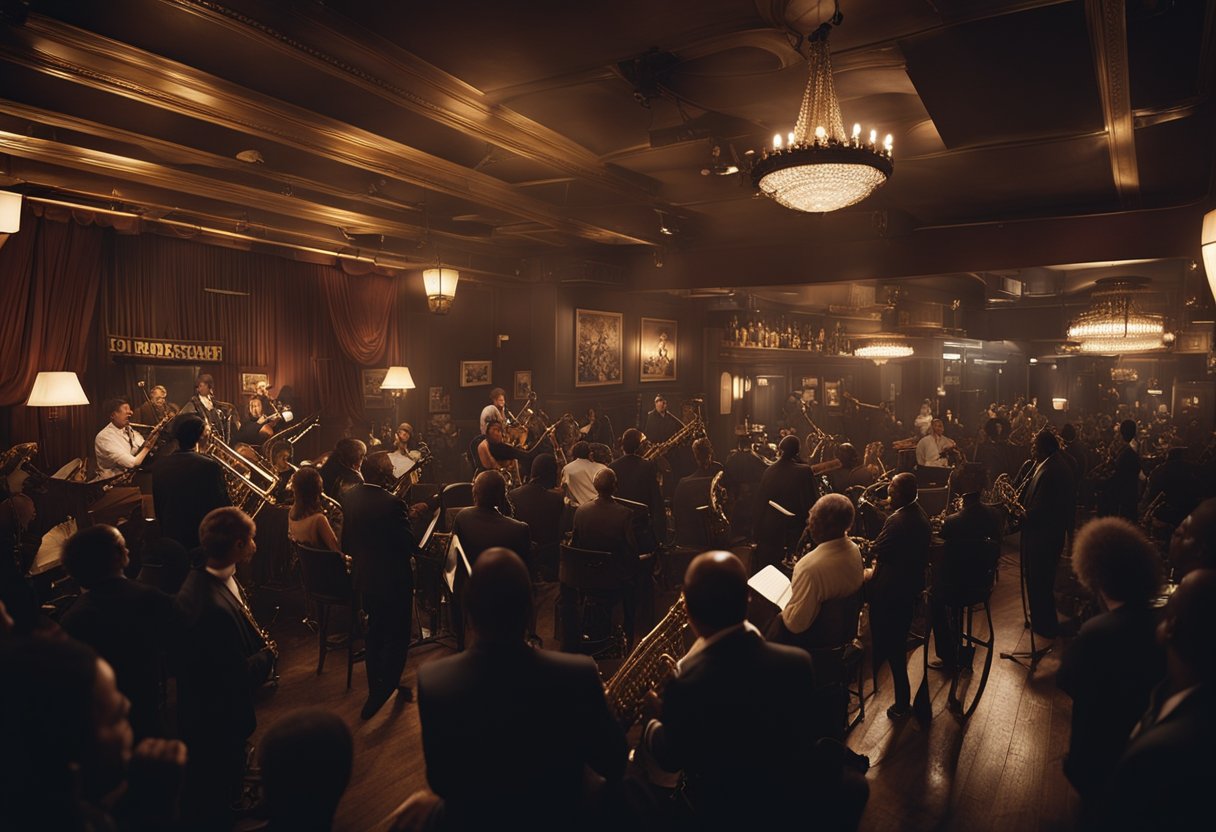
FAQs
In this section, we tackle some of the most commonly asked questions about the vibrant jazz clubs of New Orleans and their monumental impact on the music world.
Who were prominent New Orleans jazz musicians in the early years of the genre?
Some of the most influential early New Orleans jazz musicians included Louis Armstrong, whose skill with the trumpet and cornet was unmatched, and Joe “King” Oliver, a brilliant cornet player and bandleader. Their contributions were pivotal in shaping jazz music.
In which year did the first jazz recordings occur?
The first jazz recordings occurred in 1917, a pivotal year that marked the beginning of jazz’s spread from New Orleans to the rest of the United States and eventually to the world.
Could you name a seminal recording from the dawn of the New Orleans jazz era?
A seminal recording from the dawn of the New Orleans jazz era was the Original Dixieland Jass Band’s “Livery Stable Blues,” often cited as the first jazz record ever made.
Which district of New Orleans is considered the cradle of jazz?
The French Quarter of New Orleans is widely regarded as the cradle of jazz, where the genre blossomed amidst the area’s rich cultural mix and vibrant nightlife.
How did jazz music rise to popularity during its early years?
Jazz music rose to popularity through its infectious rhythm and ability to incorporate diverse musical styles. Its early propagation was facilitated by live performances in New Orleans’s bustling clubs and dance halls, where audiences were captivated by its novel sound.
Who are two other influential jazz artists from the 1920s?
Two other influential jazz artists from the 1920s were Sidney Bechet, known for his virtuoso clarinet and soprano saxophone play, and Bessie Smith, celebrated for her powerful blues-infused vocals that resonated with jazz’s ethos.




